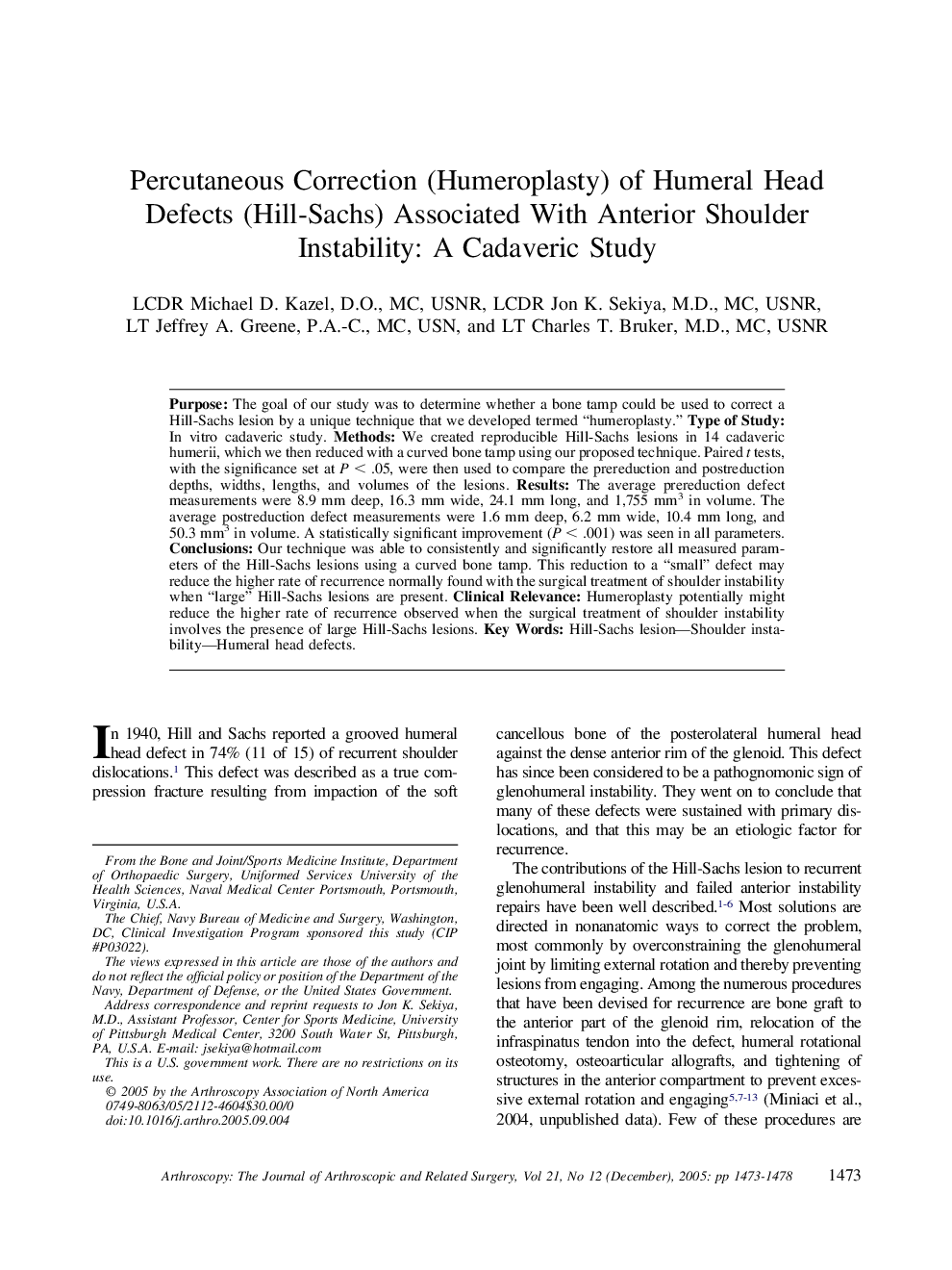| Article ID | Journal | Published Year | Pages | File Type |
|---|---|---|---|---|
| 10078745 | Arthroscopy: The Journal of Arthroscopic & Related Surgery | 2005 | 6 Pages |
Abstract
Purpose: The goal of our study was to determine whether a bone tamp could be used to correct a Hill-Sachs lesion by a unique technique that we developed termed “humeroplasty.” Type of Study: In vitro cadaveric study. Methods: We created reproducible Hill-Sachs lesions in 14 cadaveric humerii, which we then reduced with a curved bone tamp using our proposed technique. Paired t tests, with the significance set at P < .05, were then used to compare the prereduction and postreduction depths, widths, lengths, and volumes of the lesions. Results: The average prereduction defect measurements were 8.9 mm deep, 16.3 mm wide, 24.1 mm long, and 1,755 mm3 in volume. The average postreduction defect measurements were 1.6 mm deep, 6.2 mm wide, 10.4 mm long, and 50.3 mm3 in volume. A statistically significant improvement (P < .001) was seen in all parameters. Conclusions: Our technique was able to consistently and significantly restore all measured parameters of the Hill-Sachs lesions using a curved bone tamp. This reduction to a “small” defect may reduce the higher rate of recurrence normally found with the surgical treatment of shoulder instability when “large” Hill-Sachs lesions are present. Clinical Relevance: Humeroplasty potentially might reduce the higher rate of recurrence observed when the surgical treatment of shoulder instability involves the presence of large Hill-Sachs lesions.
Related Topics
Health Sciences
Medicine and Dentistry
Orthopedics, Sports Medicine and Rehabilitation
Authors
LCDR D.O., MC, USNR, LCDR M.D., MC, USNR, LT P.A.-C., MC, USN, LT M.D., MC, USNR,
